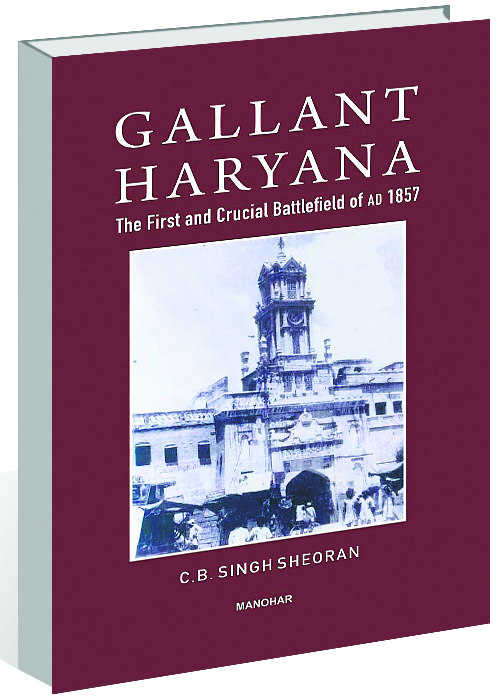M Rajivlochan
A wonderful piece of research, this book provides one of the best details of the events of 1857 in Haryana. Professional historians have ignored such details. Under the circumstances, one can only be thankful to the author for picking up the responsibility of providing such a marvellous account of the events of the mutiny of 1857 in Haryana and the people involved in it.
As the author notes, in the absence of any documentation, people tended to forget the immense upsurge that happened against the British in Haryana just 160 years ago. The forgetfulness was of two kinds. One was the forgetfulness about those who sacrificed their lives and properties in an effort to oust the British. Once the mutiny that began in the summer of 1857 had been suppressed, their villagers, neighbours and families all, ignored them. The ones who had been jailed were seldom visited by anyone. The ones who had been given the capital punishment were quickly forgotten.
The second sort of forgetfulness involved the convenient amnesia that hid from memory the over 4,500 individuals who snitched on the rebels. These individuals and their families were provided with prizes, money, land and honours by the British. They were well known in the locality. People feared them lest they inform the government about any rebellious tendencies within the populace. What was not forgotten was the dark revenge that the state wreaked upon the rebels and their families.
Myths and stories, not always accurate, cropped up around the horrific punishments that the government meted out to entire villages that had helped the rebels. Some of this got transmogrified into demonic sahibbas, European-led moving columns that were active in Sirsa, Fatehabad, Hisar, Hansi, Bhiwani and Rohtak. Their objective was to recapture the lands lost to the rebels and dole out severe punishment to the people. As the author notes, their “sole purpose was to punish and plunder so that people could be terrorized to such an extent that they could never dream of getting rid of the British rule” (p. 205).
The battles of the mutiny are described in detail, with the help of maps, but, mostly with the help of reports generated by the British. These include, with little detail, actions in which the rebels were successful in defeating the British forces and their Indian supporters such as the Raja of Alwar. More detailed battle descriptions are of those actions where the British were victorious.
As he reconstructs these details, the author notices the large number of peasant groups that spontaneously joined the rebels because, he concludes, of the severe rates of land revenue and the rigid way in which it was collected from all landholders.
In his descriptions of the mutinying population we see a free play of the Salt line, the land revenue collection machinery and the numerous routine humiliations that the white men did not hesitate to inflict on Indians.
By August 1857, the tide had begun to turn in favour of the British. An entire chapter lists out the doings of those Indians who helped the British in re-establishing their control. This list includes, among others, the Raja of Patiala and the Nawab of Pataudi. However, details are provided only with regard to some of the collaborators. Many are simply listed as having provided help. These included Sardars Dharam Singh, Kishan Singh and Partab Singh of Shahabad. Some, such as the Nawab of Kunjpura (Karnal), are listed as having been given favours after the mutiny. That is being taken as an indicator of their active role as collaborators. At one point the author cannot desist claiming that ‘the Rajas of Patiala, Jind, Nabha, Bikaner and Jaipur and the Nawab of Karnal were the top gainers at the cost of Haryanavis’ (p. 484).
An entire chapter is devoted to the perpetrators of horrors on the local population. A list of some 192 British officers is provided but against many names the only information provided is that they participated in suppressing the rebellion.
After reading this fascinating account of the mutiny in Haryana, though, one is left wondering: why did such a large number of people collaborate with the British? Did none see the British as alien and oppressive rulers?
Unlock Exclusive Insights with The Tribune Premium
Take your experience further with Premium access.
Thought-provoking Opinions, Expert Analysis, In-depth Insights and other Member Only Benefits
Already a Member? Sign In Now










